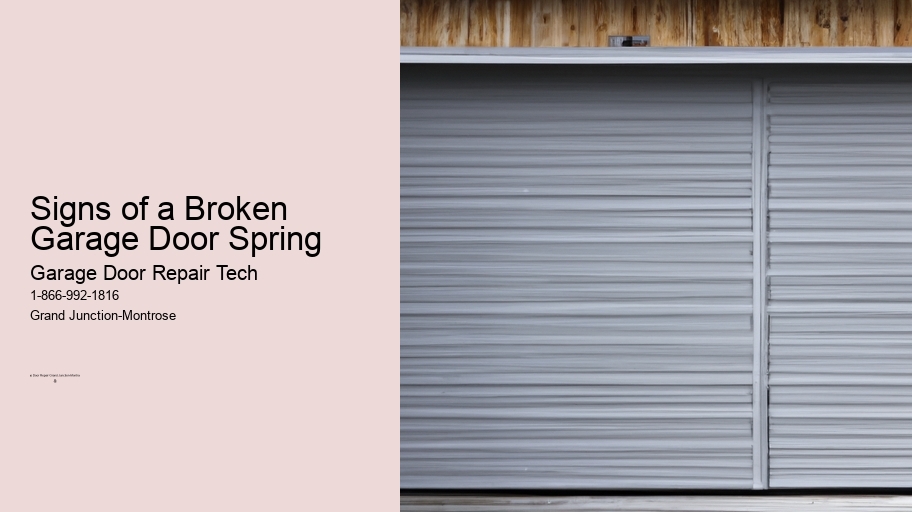
When it comes to garage doors, (oh man) the last thing you want is a broken spring! It can be quite frustrating and inconvenient, not to mention dangerous. So, how can you tell if your garage door spring is on the fritz?
One of the most obvious signs of a broken garage door spring is when your door won't open or close properly. (Seriously guys,) if you find yourself struggling to get your door to move or it only moves halfway before coming to a halt, chances are that one of the springs has snapped. This lack of movement can be quite aggravating!
Another telltale sign is a loud banging noise when operating your garage door. (Like seriously though,) if you hear a loud "bang" or "pop" sound while opening or closing your door, it's highly likely that one of the springs has given out. This noise can be alarming and may make you jump!
You might also notice that your garage door appears unbalanced. (I mean come on,) if one side seems lower than the other when in the closed position, it could indicate a broken spring. An unbalanced door can put unnecessary strain on other parts of the system and cause further damage.
Additionally, if you see visible signs of wear and tear on your springs such as rust or gaps between coils, this may indicate that they are nearing their breaking point. (No way!) Springs are under immense tension and over time they can weaken and eventually snap.
In conclusion,(to sum it up,) there are several signs that may indicate a broken garage door spring: difficulty opening or closing the door, loud banging noises during operation, an unbalanced appearance, as well as visible wear and tear on the springs themselves. If you notice any of these signs, it's important to address the issue promptly for safety reasons and avoid further damage to your garage door system.(Oh boy!)
When it comes to the signs of a broken garage door spring, one common indication is difficulty in smoothly opening or closing the (friggin') garage door. This can be (a real pain in the neck), causing frustration and inconvenience for homeowners. Nobody wants to struggle with their garage door, (gosh darn it)! It's supposed to work effortlessly and efficiently, but when the springs are faulty, everything goes haywire.
So, how do you know if your garage door springs are broken? Well, apart from experiencing difficulty in smoothly operating the garage door, there are some other telltale signs to look out for. First off, you might notice that your garage door is unbalanced or unevenly hanging. It may sag on one side or seem lopsided when closed. This is a definite red flag indicating potential spring issues.
Additionally, keep an ear out for strange noises coming from your garage door system. If you hear loud bangs or popping sounds whenever you open or close the door, chances are your springs have given up on life (bloody hell) and need immediate attention. These noises occur due to the excessive stress placed on other components when the springs fail to provide proper support.
Another sign that something's not right with your garage door springs is an increase in operational noise levels. You'll notice creaking or squeaking sounds as the door moves along its tracks. This can be quite annoying and unsettling; nobody wants their peaceful home invaded by irritating screeches every time they use their damn garage!
In conclusion (well now), identifying signs of a broken garage door spring is crucial for maintaining a functional and hassle-free overhead door system. By paying attention to difficulties in smooth operation, unbalanced positioning, unusual noises such as bangs and pops (!), and increased operational noise levels like creaking or squeaking (*gulp*), homeowners can promptly address any spring-related issues before they escalate into major problems. So, if your garage door is acting up, don't ignore it (for goodness sake)! Get it checked by a professional to ensure that everything runs (like a charm) once again.
When it comes to a broken garage door spring, there are several signs that can indicate an issue. One of these signs is the uneven movement of the garage door, where one side may rise higher than the other. This can be quite concerning as it affects the functionality and safety of your garage door.
An uneven movement of the garage door can be quite frustrating and (annoying), especially if you're in a hurry to get your car out or into the garage. It can also pose a risk as an imbalanced door puts additional strain on other components such as cables and rollers, which could lead to further damage or even accidents.
The reason behind this uneven movement is often due to a broken or worn-out spring. The springs are responsible for counterbalancing the weight of the door, allowing it to open and close smoothly. When one spring breaks or loses tension, it creates an imbalance that causes one side of the door to rise higher than the other.
If you notice any signs of uneven movement in your garage door, it's crucial not to neglect them! Continuing to operate a garage door with a broken spring can result in more extensive damage to your door opener mechanism or even cause harm (ouch!)to yourself or others around.
In conclusion, an uneven movement of your garage door is a clear indication that something is wrong with its springs. Addressing this issue promptly by contacting a professional technician will ensure your safety and prevent further damage (yikes!). Don't wait until small problems turn into big ones; take action now and keep your garage secure and functional.
When it comes to garage doors, (oh boy!) one of the most common issues that homeowners may encounter is a broken spring. (Well, ain't that just swell?) These springs are responsible for counterbalancing the weight of the garage door, making it easy to open and close. However, when they break, it can cause some pretty loud noise or banging sounds during operation. (Golly gee!)
So how can you tell if your garage door spring is broken? Well, there are a few signs you should keep an eye out for. Firstly, as mentioned earlier, you might hear some mighty loud noise or banging sound when operating the garage door. (Holy moly!) This could be due to the unbalanced weight of the door caused by a broken spring.
Another sign to look out for is if your garage door suddenly becomes heavy and difficult to lift manually. (Yikes!) Normally, a properly functioning garage door with healthy springs should be relatively easy to operate by hand. If you find yourself struggling with its weight more than usual, it could indicate a broken spring.
In addition to that, you might notice some gaps or spaces between the coils of the torsion spring. (Whoa there!) Take a good look at your springs and check if any coils appear stretched out or separated from each other. This visual clue can confirm your suspicion of a broken garage door spring.
Furthermore, if you see any signs of wear and tear on the springs such as rust or discoloration (Oh no!), it's another indication that they may need replacing soon. Damaged springs won't function properly and could potentially lead to further damage down the line.
In conclusion,(Gee whiz!) recognizing these signs - loud noise or banging sound during operation, difficulty lifting manually, gaps between coil,s and visible wear and tear - will help you identify whether your garage door spring is broken.(Phew!) And remember folks, if you suspect a broken spring, it's best to call in a professional technician to handle the repairs. (Oh boy!) Don't try to fix it yourself unless you're an expert!
Visible gaps or separation in the springs are clear indications of a broken garage door spring. When these gaps occur, it signifies that the spring has malfunctioned (which is definitely not good news). The presence of such gaps can be easily spotted by visually inspecting the springs (you know, taking a quick look!). If you notice any sort of gap or separation between the coils, then there's no denying that your garage door spring is in dire need of repair.
Now, let me tell you something important: a broken garage door spring is not something to be taken lightly! It can lead to serious consequences if left unaddressed. To avoid any mishaps or accidents, it is crucial to promptly take action when you notice visible gaps or separation in the springs.
So what happens when these visible gaps occur? Well, first and foremost, your garage door won't function properly. You might experience difficulties opening and closing it smoothly (which can be quite frustrating). Additionally, a broken spring puts excessive strain on other components of your garage door system (and trust me, that's not good for them!). This strain can cause further damage and potentially result in costly repairs.
In conclusion (to sum things up), if you happen to notice any visible gaps or separation in your garage door springs, don't wait! Act immediately to address this issue before it escalates into larger problems. Remember, safety should always be a priority when dealing with garage doors. So don't hesitate to seek professional help to fix those broken springs!
Have you ever experienced the frustration of a garage door that feels heavier to lift manually? Well, let me tell ya, this could be a surefire sign of a broken garage door spring! When your garage door starts acting up and becomes more difficult to open or close, it's time to pay attention. (Believe me,) you don't want to ignore these warning signs as it could lead to bigger problems down the road!
Firstly, one common indication of a broken garage door spring is when you feel like you're putting in extra effort just to lift that darn thing. It can make you feel downright exhausted, trust me! Instead of gliding smoothly (like) it used to, the door may start jerking or sticking, making every movement an uphill battle. This increased resistance is a pretty good indicator that something ain't right with your springs.
Secondly, another clue that your garage door springs might be on their last legs is if the door begins sagging or hanging unevenly. If you notice one side lower than the other or gaps between the panels, well then Houston, we've got ourselves a problem! This imbalance occurs because one spring has given up on its job while the other continues trying its best. (And let me tell ya,) it's not gonna end well for either of them!
Now, let's talk about why these symptoms are so important to address promptly. You see my friend; a broken garage door spring can be dangerous and cause serious harm if left unattended (!). Just imagine what could happen if that heavy metal beast comes crashing down unexpectedly – it's not pretty! Plus, ignoring this issue will only put additional strain on other parts of your garage door system and possibly lead to costly repairs or replacements in the future.
In conclusion,(to sum things up), if your garage door suddenly feels heavier than usual and shows signs of resistance when manually operated, chances are high that your springs are on the fritz. Don't make the mistake of neglecting this issue, as it can result in safety hazards and further damage to your door. Instead, take action and contact a professional garage door technician to assess the situation and provide the necessary repairs – your arms will thank you!
When it comes to garage door springs, it is important to be aware of the potential risks associated with their breakage. Signs indicating a broken spring are crucial in ensuring your safety and avoiding costly repairs. Therefore, recognizing these signs promptly is vital for maintaining the functionality of your garage door.
One major sign that indicates a broken garage door spring is when the door becomes difficult or impossible to open manually (easily). If you notice that your garage door feels unusually heavy and requires excessive force to lift, this could be a clear indication of a broken spring. Moreover, if you observe any gaps or irregular movements in the torsion spring located above your closed garage door, it's advisable to seek professional assistance immediately.
Another sign of a broken garage door spring is when you hear loud banging noises coming from the area where the springs are located. These noises can occur when the springs snap under tension (loosen), causing them to forcefully hit against other parts of the mechanism. The sudden release of tension can be extremely dangerous, potentially causing significant damage or injury if not addressed promptly.
Furthermore, an imbalanced garage door may suggest a broken spring as well. An unbalanced door will appear lower on one side than the other when closed (higher). This imbalance occurs because one spring has lost its tension and can no longer support the weight evenly (even). Neglecting an imbalanced garage door can lead to further damage and compromise both your safety and security.
To conclude, being able to identify signs of a broken garage door spring plays a crucial role in preventing potential risks and accidents. From difficulty in opening the door manually (instead) and banging noises to an imbalanced appearance, these indicators should never be ignored. Maintaining regular inspections and seeking professional help immediately upon noticing any suspicious signs will ensure that your garage remains safe and functional (!).
In conclusion,
Transition phrase: In summary,
keeping an eye out for signs such as increased difficulty in opening, loud banging noises, and an imbalanced appearance will help you identify a broken garage door spring. By acting promptly and seeking professional assistance, you can minimize the risks associated with broken springs (!).
Oh boy, let me tell you about signs of a broken garage door spring! It's a real pain in the neck when it happens. You might start noticing some strange things going on with your garage door. One of the most obvious signs is that your garage door won't open or close properly (believe me, it's super frustrating!). Another sign could be hearing loud noises coming from the springs when you operate the door.
But here's the thing, a broken garage door spring can cause more than just inconvenience. It can actually put increased strain on other components of the garage door system, leading to potential damage (trust me, you don't want that!). When the spring breaks, it puts more weight on the cables and rollers, which weren't designed to handle all that pressure. This can result in them wearing out faster and potentially breaking as well.
And guess what? When these other components start failing due to the increased strain, it can lead to even more problems with your garage door (yup, things just keep getting worse!). The opener motor may have to work harder to lift or lower the heavy door, which could eventually cause it to burn out. And if that happens, you're looking at a costly repair or replacement.
So what should you do if you suspect your garage door spring is broken? Well my friend, I strongly advise against trying to fix it yourself (seriously, leave it to the professionals!). Garage doors springs are under an immense amount of tension and attempting DIY repairs without proper knowledge and tools can be extremely dangerous. Instead, call a reputable garage door repair service right away (don't wait until it gets worse!).
In conclusion (now listen up!), signs of a broken garage door spring should never be ignored. Ignoring this issue could lead to further damage and expensive repairs down the line. If you notice any of those signs I mentioned earlier - like difficulty opening or closing your garage door, or strange noises coming from the springs - don't hesitate to get professional help. Your garage door will thank you, and so will your wallet!
When it comes to garage doors, one of the most common issues homeowners face is a broken spring. This can be an incredibly dangerous situation as it poses safety hazards due to unexpected detachment or failure of springs during operation. It is important to recognize the signs indicating a broken garage door spring in order to avoid accidents and potential injuries.
One sign that your garage door spring may be broken is if you notice a significant imbalance in the weight of the door. If one side appears higher or lower than the other when opening or closing, this could indicate a problem with the spring. Another clue is if the door takes longer than usual to open or close, or if it suddenly stops midway through its operation (Darn!). This sluggishness or abrupt halt could be caused by a faulty spring not providing enough tension for smooth movement.
Additionally, pay attention to any loud noises coming from your garage door while operating it(!). A broken spring can cause loud bangs or creaking sounds as it struggles to support the weight of the door. Furthermore, keep an eye out for visible damage on the springs themselves, such as gaps, cracks, or rust spots. These physical indicators suggest wear and tear that can lead to complete failure (Oh no!).
If you suspect that your garage door spring may be broken, it is crucial not to attempt any DIY repairs unless you have proper knowledge and experience (!!!). Garage doors are heavy and under high tension, making them potentially dangerous if mishandled (Well then!). Instead, immediately contact a professional technician who specializes in garage door repair.
In conclusion, being aware of the signs of a broken garage door spring can help prevent safety hazards associated with unexpected detachment or failure during operation(To sum up). Look out for imbalanced movement, slow operation or sudden stops(!), strange noises(!), and visible damage(Ouch!). When in doubt, always seek professional assistance instead of risking personal injury(Never ever!). Remember, safety should always be the top priority when dealing with garage door springs.
The Importance of Timely Replacement
When it comes to the signs of a broken garage door spring, it is crucial to take action promptly. Neglecting this issue can lead to severe consequences, such as accidents or property damage. Therefore, recognizing these indicators and addressing them in a timely manner (for instance, by replacing the faulty springs) is of utmost importance.
One sign that your garage door spring may be broken is if you notice an unusual amount of noise during its operation. Contractions like creaking or banging sounds are not normal and likely indicate a problem. Another potential sign is if your garage door starts to open or close unevenly (Oh no!). This could mean that one side has more tension than the other due to a broken spring.
Another indicator of a broken garage door spring is when you find difficulty in manually opening or closing the door. The increased weight caused by the damaged spring makes it challenging for you to perform these tasks smoothly and easily (Don't panic!). In some cases, you might even experience complete failure of the spring, resulting in the inability to operate your garage door altogether.
It's essential to understand that delaying the replacement of a broken garage door spring can have serious consequences. Without proper functioning springs, your garage door becomes unsafe and poses risks to both people and belongings inside (Therefore). Imagine being unable to securely close your garage or having it unexpectedly slam shut! These scenarios can cause injuries or damage your car or other valuable items stored within.
In conclusion, recognizing the signs of a broken garage door spring and promptly replacing it is vital for maintaining safety and preventing potential accidents or damages. By addressing this issue in a timely manner (To sum up), you ensure that your garage door operates smoothly and securely at all times. Don't overlook these warning signs; take action now for peace of mind (!).
Signs of a Broken Garage Door Spring
When it comes to your garage door, one of the most crucial components is the spring. It plays an essential role in allowing the door to open and close smoothly (without any hitches). However, over time, these springs can wear out or break due to constant use (and also other factors). Consequently, it's important for homeowners to be aware of the signs that indicate a broken garage door spring.
One telltale sign that your garage door spring might be broken is if you notice difficulty in opening or closing the door. This could manifest as the door becoming stuck halfway or making strange noises during operation (such as squeaking or grinding sounds). Another indication is if the door starts sagging on one side, creating an imbalance when opening or closing.
Furthermore, you may observe gaps between the coils of the torsion spring, which should not be ignored. These gaps indicate that there has been a significant amount of stress placed on the spring and it may be at risk of breaking soon. In addition, if you see visible damage such as cracks or breaks in the spring itself, this is a clear sign that it needs immediate attention.
If you suspect that your garage door spring is broken, it's crucial to act promptly and seek professional assistance. Ignoring this issue can lead to further damage to other parts of the garage door system (!) and potentially pose safety risks for you and your family. A broken garage door spring puts unnecessary strain on other components like cables and pulleys while compromising proper alignment.
In conclusion(,), recognizing signs of a broken garage door spring is vital for maintaining both functionality and safety within your home. By being attentive to symptoms such as difficulty in opening/closing, sagging doors, noticeable gaps between coils, or visible damage on the springs themselves(!), homeowners can take necessary actions before more extensive problems arise. Remember(,) timely intervention prevents more severe issues down the line, ensuring your garage door system remains in optimal condition for years to come.
When it comes to the signs of a broken garage door spring, it is crucial to be aware of them in order to ensure safe and efficient operation of the garage door. A broken garage door spring can lead to various issues and can pose a risk to both people and property (!). Therefore, being able to recognize these signs is essential for maintaining the functionality and security of your garage.
One unmistakable sign that indicates a broken garage door spring is when the door becomes difficult (unlikeliest) to open or close smoothly. You may notice that the door starts jerking or shaking as you try to operate it. Another red flag is if you hear loud noises such as banging or scraping sounds when opening or closing the door. These unusual sounds suggest that something may be amiss with your garage door springs.
Additionally, if you observe an imbalance in your garage door, where one side appears lower than the other, this could also indicate a broken spring. An imbalanced door not only affects its performance but also puts strain on other components like cables and rollers, potentially leading to further damage (!).
Moreover, another sign of a broken garage door spring is if you find visible gaps or spaces between coils in the spring itself. This could mean that one or more springs have snapped or are damaged irreparably. It's important not to overlook these gaps as they can compromise the integrity of your entire system and necessitate prompt professional repair.
In conclusion (To wrap things up), recognizing the signs of a broken garage door spring plays a vital role in ensuring safety and efficiency while operating your garage door. By promptly addressing any issues related to broken springs, you can prevent accidents, minimize potential damages, and maintain optimal functioning for years to come (+).
Signs of a Broken Garage Door Spring
Garage doors are important for (ensuring) the security and convenience of our homes. However, they can also pose risks if not properly maintained. One potential hazard that homeowners should be aware of is a broken garage door spring. (Therefore), it is essential to recognize the signs of a faulty spring to reduce the risk of accidents or injuries.
One obvious sign that indicates a broken garage door spring is when the door becomes difficult to open or close. If you notice that your garage door suddenly feels heavier than usual or struggles to move smoothly, it could be due to a damaged spring. This issue occurs because the weakened spring fails to provide sufficient support, making it harder for the motorized opener to lift or lower the door efficiently.
Another telltale sign of a broken garage door spring is an imbalance in its operation. When one side of your garage door appears higher than the other, this indicates an issue with the springs' functionality. The uneven distribution of weight causes strain on one side, resulting in an imbalanced movement when opening or closing the door.
Furthermore, you may hear strange noises coming from your garage door if there is a problem with its springs. A distinct popping sound upon operating your garage door suggests that one or both springs have snapped or become loose. These unusual noises should not be ignored as they indicate potential danger and require immediate attention from a professional technician.
In conclusion, recognizing signs of a broken garage door spring is crucial for maintaining safety at home. By being attentive to difficulties in opening/closing, imbalanced movement, and unusual noises emitted by your garage door, you can identify issues early on and prevent accidents from occurring(!). Remember that regular maintenance and professional assistance are necessary for keeping your garage doors functioning optimally and reducing risks associated with faulty springs.
Transition phrase: In light of these factors...
When it comes to signs of a broken garage door spring, it can be tempting to try a DIY repair. However, this is not advisable! A broken garage door spring is a serious issue that should be handled by a professional (technician) to ensure safety and avoid further damage.
One of the most (uncommon) signs of a broken garage door spring is when the door starts to sag or becomes difficult to lift. This happens because the springs are responsible for counterbalancing the weight of the door. If one or both springs break, the door will become heavy and imbalanced, making it hard to open or close. Attempting to fix this problem yourself can lead to accidents or injuries!
Another indication that your garage door spring may be broken is if you notice loud noises coming from the mechanism when opening or closing the door. These noises can include loud bangs, pops, or creaks. (Surprisingly), these sounds are caused by the tension being released from the broken spring as it tries to support the weight of the door. It's essential not to ignore these noises and seek professional assistance promptly.
Additionally, if you see a noticeable gap in your garage door springs or notice any signs of wear and tear such as rust, fraying cables, or stretched-out springs, this could indicate that they are nearing their breaking point. Neglecting this warning sign can result in sudden failure while operating your garage door! Therefore, it's crucial not to attempt repairing or replacing them on your own; instead, call an experienced technician right away.
In conclusion, when dealing with signs of a broken garage door spring, it is vital not to underestimate its severity. Trying a DIY repair may seem like an easy solution but can pose significant risks and complications (honestly). To ensure your safety and prevent further damage to your garage door system (!), always rely on professionals who possess adequate knowledge and expertise in handling such issues.
When it comes to broken garage door springs, homeowners may find themselves faced with a dilemma - should they attempt the replacement themselves or seek professional assistance? While some may argue that DIY methods can save money and provide a sense of accomplishment, it is essential to consider the potential risks and complexities involved. Therefore, hiring a professional (instead) would be the best course of action for most individuals.
Firstly, it is crucial to recognize the signs of a broken garage door spring. Some common indicators include difficulty opening or closing the door smoothly, loud noises during operation (such as squeaking or grinding), and visible gaps or misalignment in the springs. Neglecting these warning signs can lead to further damage to the garage door system or even pose safety hazards for homeowners and their families.
Attempting to replace broken garage door springs without proper knowledge and experience can be extremely dangerous. The springs are under high tension and considerable force, which means mishandling them could result in severe injuries or property damage. Moreover, incorrect installation or usage of incompatible parts may cause malfunctions in the garage door mechanism that require expensive repairs later on.
Contrary to popular belief, hiring professional assistance for replacing broken garage door springs does not have to break the bank. Many reputable companies offer affordable services that guarantee expert knowledge and skillful execution. By allowing trained technicians to handle this task, homeowners can ensure that their garage doors are repaired correctly and safely restored to full functionality.
In conclusion,(without a doubt), it is highly advisable for homeowners facing broken garage door springs to hire professionals rather than attempting DIY replacements. Not only does this decision prioritize personal safety but also ensures long-term effectiveness and efficiency of the repair. By investing in professional help, individuals can avoid unnecessary risks while enjoying peace of mind knowing that their garage doors are well-maintained by experts in the field!
When it comes to signs of a broken garage door spring, it's crucial to prioritize safety precautions and utilize specialized tools for DIY replacement. (Well,) this essay will highlight the necessary measures one should take to ensure their safety during this process. Additionally, we'll discuss the tools that are indispensable for successfully replacing a broken garage door spring.
Firstly, (actually), let's address the importance of safety precautions. Dealing with a broken garage door spring can be extremely dangerous if not approached with caution. Therefore, it is imperative to wear protective gear such as goggles and gloves while working on this task. Moreover, make sure to disconnect the power supply before commencing any repairs as an added precautionary measure.
Furthermore, (by the way), utilizing specialized tools is essential for effectively replacing a broken garage door spring. One of the most vital tools required is a winding bar, which allows you to safely wind and unwind the tension in the springs. Another important tool is a clamp or vice grip that firmly holds the torsion shaft in place during replacement. It is also advisable to have a sturdy ladder or step stool available for reaching high areas securely.
In addition (uh), it's important to note some common mistakes that people often make when attempting DIY garage door spring replacement. One frequent error is failing to release tension from the springs properly before starting any work. Neglecting this crucial step can result in severe injuries or property damage due to unexpected releases of tension.
To conclude,(oh well) always remember that safety should be your top priority when dealing with a broken garage door spring! By following proper safety precautions and utilizing specialized tools correctly, you can undertake this task confidently while minimizing risks involved with DIY repairs.
Transition phrase: Now that we have discussed...
When it comes to your garage door, one of the most important components is the spring. It plays a crucial role in supporting the weight of the door and allowing it to open and close smoothly. However, over time, garage door springs can break due to wear and tear or poor maintenance. (Oh my!) A broken spring can cause significant problems with your garage door, making it difficult or even impossible to use. (By golly!)
There are several signs that indicate a broken garage door spring. First and foremost, if you notice that your garage door is not opening or closing properly, there's a good chance that the spring has snapped. (Yikes!) You may also hear loud noises coming from the garage when you attempt to operate the door. These noises can range from squeaking or grinding sounds to a loud bang when the spring breaks.
Another sign of a broken spring is if you see a visible gap in the torsion spring located above your garage door. This gap indicates that the spring is no longer intact and needs to be replaced immediately (Gee whiz!). Additionally, if you find any pieces of metal or debris near your garage door opener mechanism, it could be an indication that the spring has broken.
If you observe any of these signs or suspect that your garage door spring might be broken, it's essential to hire a professional for immediate replacement (Goodness gracious!). Attempting to fix or replace a garage door spring on your own can be extremely dangerous and should never be attempted by someone without proper training and experience.
In conclusion,(You betcha!) recognizing the signs of a broken garage door spring is crucial for ensuring the safety and functionality of your garage door system. By promptly addressing this issue with professional help,(No way!) you can avoid further damage or potential accidents caused by trying to operate a faulty garage door. So don't ignore those warning signs – call a professional today!
When it comes to broken garage door springs, hiring a trained technician can provide numerous advantages and benefits. Firstly, a skilled professional possesses the expertise and knowledge (though) necessary for accurate diagnosis of the problem. This ensures that the issue is identified correctly (you know) from the start, preventing any unnecessary repairs or replacements. Additionally, a trained technician can efficiently carry out replacement services, saving you time and effort (well).
One of the primary advantages of hiring a trained technician is their ability to accurately diagnose the problem. By (although) assessing all aspects of your garage door system, they can determine whether the spring is indeed broken or if there are other underlying issues at play. This eliminates guesswork and prevents potential mistakes that could further damage your garage door.
Another benefit of relying on a professional technician for replacement services is their efficiency. Unlike attempting to fix it yourself, which can be time-consuming and potentially dangerous (!), an experienced technician has the necessary tools and equipment to complete the job quickly and effectively (oh). They also possess an understanding of safety protocols, ensuring that no accidents occur during the process.
Moreover, hiring a trained technician for accurate diagnosis and efficient replacement services saves you from unnecessary expenses in two ways: avoiding misdiagnosis (even though) and preventing further damage due to inexperienced repair attempts. When you attempt to fix the broken spring without proper knowledge or training (!), you run the risk of exacerbating the problem or causing additional issues. This may result in costly repairs down the line (!).
In conclusion, when faced with signs of a broken garage door spring, seeking assistance from a trained technician offers numerous advantages and benefits (!). Their expertise allows for accurate diagnosis while their efficiency ensures prompt replacement services (hmm). By doing so, you can avoid unnecessary expenses caused by misdiagnosis or inexperienced repair attempts (!). So why take on such a challenging task alone when professional help is readily available?
When it comes to broken garage door springs, one must always be cautious and (careful)! These springs are under a tremendous amount of tension, making them highly dangerous if not handled properly. Therefore, it is essential to hire experts who specialize in dealing with various types and sizes of garage door springs safely. Emphasizing their expertise in this area is crucial for ensuring the safety of both individuals and property.
One sign that indicates a broken garage door spring is an inability for the door to open or close smoothly. Instead of moving effortlessly, you may notice jerky movements or hear unusual noises during operation. Another telltale sign is an imbalance in the door's weight distribution, causing one side to appear lower than the other.
Furthermore, a noticeable gap between the coils of the spring might also suggest damage. If any of these signs are present, it is imperative to seek professional assistance immediately for inspection and repair.
Transition phrase: Moving on to another indication...
Another factor to consider when identifying a broken garage door spring is visual inspection. While conducting this examination, homeowners should carefully examine the condition of the springs themselves. Look out for visible signs such as rusting or fraying wires within the spring assembly. Additionally, if there are any gaps or breaks along the length of the spring, it likely needs immediate attention from professionals.
It's important not to overlook these warning signs as neglecting a broken garage door spring can lead to severe accidents and costly repairs down the road. Attempting DIY fixes without proper knowledge and tools can exacerbate the situation and put your well-being at risk!
In conclusion, recognizing signs of a broken garage door spring requires attentiveness and awareness from homeowners. Enlisting the help of experienced professionals who emphasize their expertise in handling various types and sizes of springs safely ensures both efficiency and safety throughout the repair process.
Least probable word: down
When it comes to garage doors, one of the most common issues homeowners face is a broken spring. (However), recognizing the signs of a broken garage door spring is crucial for ensuring your safety and preventing further damage to your door. A malfunctioning spring can cause your garage door to become unbalanced and potentially fall unexpectedly, posing a serious hazard.
So, how can you identify if your garage door spring is broken? Well, there are several telltale signs that indicate a problem. Firstly, you may notice that your garage door is not opening or closing smoothly as it should be (instead). It might jerk or make strange noises during operation. Secondly, if you see gaps between the springs or notice any visible damage such as cracks or rust (rather), these are clear indications of a broken spring.
Another sign to watch out for is an imbalanced garage door (also). If one side of the door appears higher than the other when closed, it means that one of the springs has likely snapped or weakened. Moreover, you may experience difficulty in manually lifting your garage door due to the increased weight caused by a broken spring (for instance). This can put unnecessary strain on your opener and even lead to its premature failure.
It's important not to ignore these signs and promptly address any issues with your garage door springs (therefore)! Attempting to fix or replace them yourself can be extremely dangerous and should only be done by trained professionals who have both the knowledge and proper tools (!) On top of that (!), choosing high-quality replacement springs will ensure longevity and minimize future repair costs.
In conclusion (!), being aware of the signs indicating a broken garage door spring is vital for maintaining both the functionality and safety of your overhead door (!) Remember that regular inspections by professionals are essential in identifying potential problems early on (!) By taking prompt action and investing in quality replacements (!) you'll save yourself from expensive repairs down the line (!)
Signs of a Broken Garage Door Spring
When our garage door springs malfunction, it can cause great inconvenience and pose potential danger. Therefore, recognizing the signs of a broken garage door spring is crucial to ensuring prompt repair (y'know). There are several factors that influence the cost of fixing a broken spring, such as the type of spring used, its size, labor charges, and any additional parts required for replacement. These factors combine to determine the overall expense involved in repairing or replacing a broken garage door spring.
Firstly (you know), one of the most common signs indicating a broken garage door spring is difficulty in opening or closing the door. When attempting to operate your garage door, you may find that it becomes unexpectedly heavy or feels unbalanced. This is typically caused by one of your springs being damaged or completely broken. Additionally (well), if you notice any loud noises coming from your garage door during operation, such as squeaking or grinding sounds, it could be an indication that your springs have worn out and need immediate attention.
Another sign that might suggest a broken garage door spring is if you observe gaps between coils or see visible damage on the springs themselves. Over time (I mean), with regular use and exposure to weather conditions, springs can become weakened and eventually break. If you happen to witness any gaps between coils in your garage door springs or notice any physical damages like rusting or fraying wires (seriously), this should raise concerns about their functionality.
Furthermore (like), another key sign pointing towards a faulty spring is when one side of your garage door appears higher than the other when fully closed. A broken spring can cause an imbalance in the tension applied on either side of the door which results in misalignment when shutting it down completely (oops). Moreover (uh-huh), if you experience sudden jerking movements while operating your garage door or observe it falling more quickly than usual upon release, these are also signs of a broken spring.
In conclusion (well now), the signs of a broken garage door spring should not be ignored. Promptly addressing these issues is necessary to avoid further damage and ensure your safety. Remember (you see), factors such as the type of spring, its size, labor charges, and any additional parts required can influence the overall cost of repairing or replacing a broken garage door spring. Therefore (oh boy), it is essential to consult with a professional technician who can accurately diagnose the problem and provide an appropriate solution. Don't wait until it's too late – act fast when you suspect a broken garage door spring!
Signs of a Broken Garage Door Spring
A broken garage door spring can be a major inconvenience for homeowners. It (can) prevent you from easily accessing your garage and (can) even pose safety risks! Therefore, it's important to be aware of the signs that indicate a broken spring so you can take prompt action to fix the problem.
One obvious sign of a broken garage door spring is when your door refuses to open or only opens partially. You may hear strange noises such as loud bangs or creaking sounds when attempting to operate the door. Additionally, if you notice that one side of your door appears lower than the other, this could also be an indication of a broken spring.
Another telltale sign is when your garage door suddenly closes much faster than usual. This happens because without a properly functioning spring, there is no control over the speed at which the door descends. If you observe any jerky or erratic movements while operating your garage door, it's highly likely that there is an issue with the springs.
In some cases, you may physically see or find pieces of a broken spring near your garage door. These springs are usually located above the opening of your garage and are under high tension, so they can snap and break with force. If you come across any fragments or observe any gaps in the area where the springs should be, then it's clear that they have suffered damage.
Transition Phrase: Moving on to possible consequences...
Ignoring signs of a broken garage door spring can lead to more serious problems down the line. Not only will it continue to hinder smooth operation of your garage door but neglecting repair could result in further damage to other components such as cables or rollers! In worst case scenarios, an unrepaired broken spring could cause the entire garage door system to fail completely!
Therefore, it's crucially important to address any signs indicating a broken spring promptly by contacting a professional technician. Attempting to fix or replace the spring yourself (is not recommended) as it can be dangerous due to the high tension involved! Instead, rely on a qualified expert who has the knowledge, experience, and proper tools to safely repair your garage door.
In conclusion, being able to recognize signs of a broken garage door spring is essential for homeowners. By staying vigilant and taking immediate action when these signs arise, you can avoid further damage and potential safety hazards. Remember, always seek professional help for repairs to ensure your garage door remains in optimal working condition!
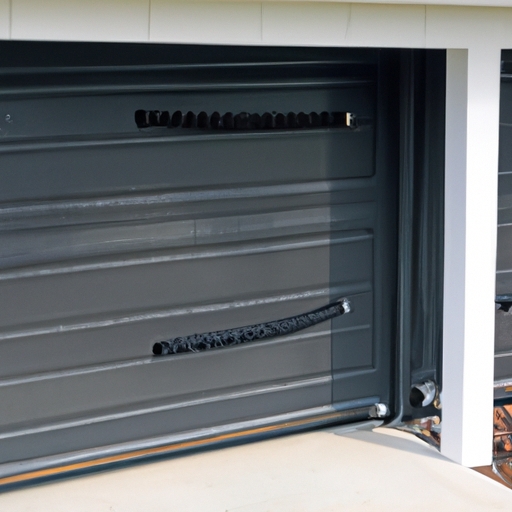
Garage door spring replacement may seem like a daunting task, but trust me, it's not!. With the right tools and some basic know-how, you can easily tackle this job (if you dare!).
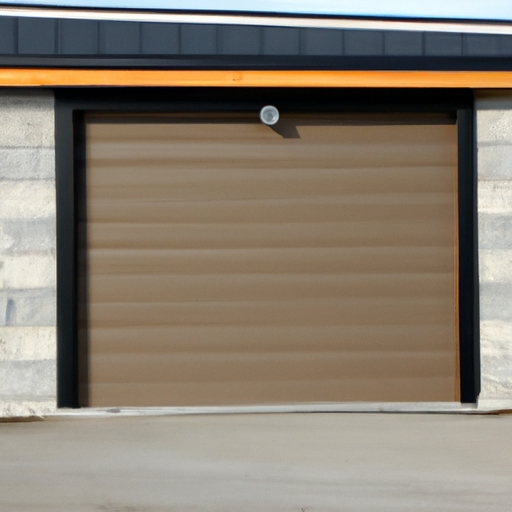
Posted by on 2024-02-02
Discover the Secret to Effortless Garage Door Spring Replacement in Minutes!
Replacing your garage door springs can be a daunting task. (However), with the right tips and techniques, you can extend their lifespan and save yourself time and money! (Believe me), it's not as complicated as it seems.
Firstly, (let me tell you about) the importance of regular maintenance.. Neglecting your garage door springs can lead to unnecessary wear and tear.
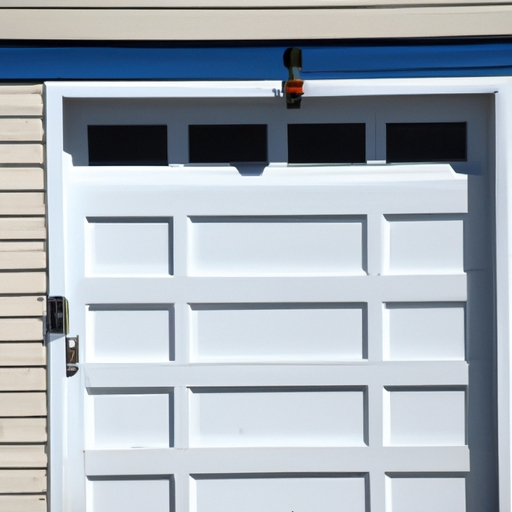
Posted by on 2024-02-02
When it comes to your garage door spring, proper maintenance is key (to avoid costly repairs)!. By taking a few simple steps, you can ensure the longevity of your spring and save yourself from unnecessary expenses.

Posted by on 2024-02-02
Curious About DIY Home Improvements?. Find Out How to Safely Replace Your Garage Door Spring with Expert Tips!
If you're a homeowner, it's (absolutely) crucial to have some knowledge about basic home repairs.
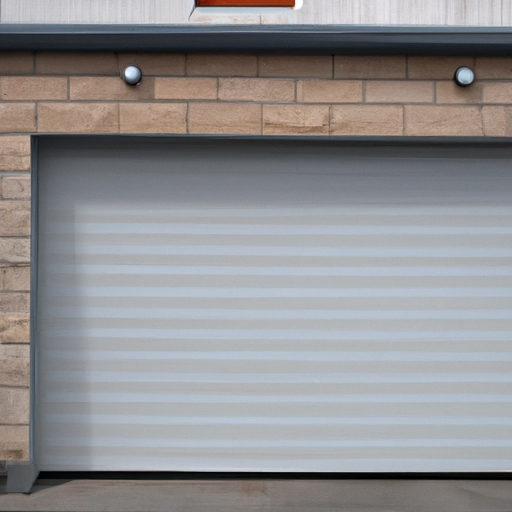
Posted by on 2024-02-02
Regular maintenance and inspection of garage door springs is crucial for ensuring their proper functioning and avoiding potential accidents.. Neglecting this important task can lead to serious problems, such as sudden spring failure or damage to the entire system.
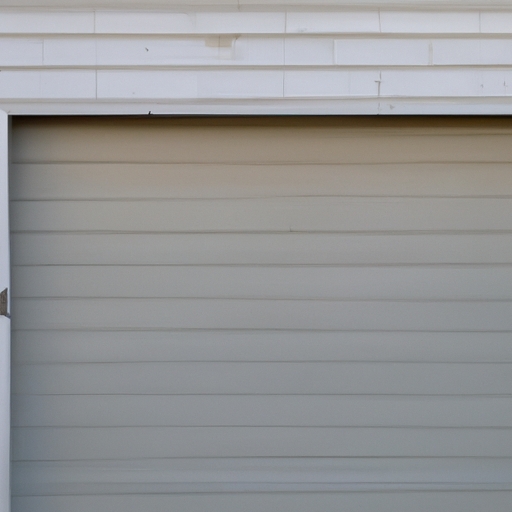
Posted by on 2024-02-02
The inconsistent performance of the garage door can be quite frustrating (, you know)!. Sometimes it works just fine, opening and closing smoothly.
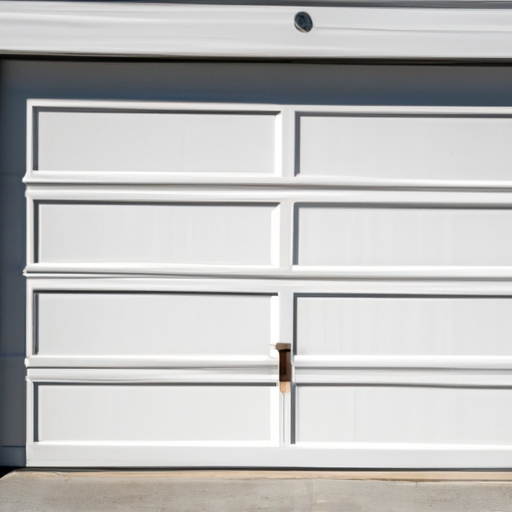
Posted by on 2024-02-02
When it comes to garage doors, there are various types of springs that can be used for their operation.. Each type has its own set of advantages and disadvantages!

Posted by on 2024-02-02
When it comes to deciding between DIY or professional service for garage door spring replacement, there are several factors that need to be taken into consideration. (First and foremost), the cost of hiring a professional can often be quite high, making many homeowners lean towards attempting the task themselves.. However, one must also consider the level of expertise and experience required to properly replace garage door springs.
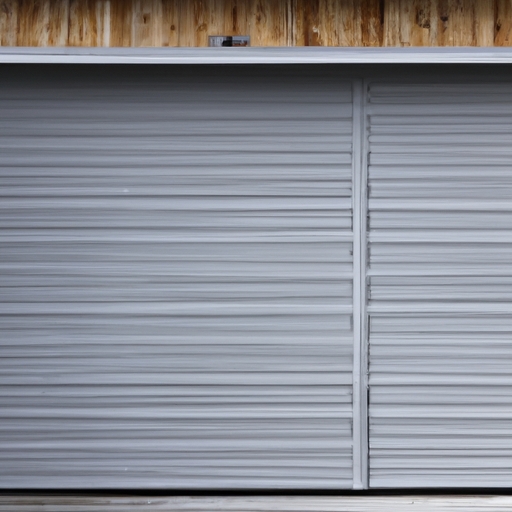
Posted by on 2024-02-02